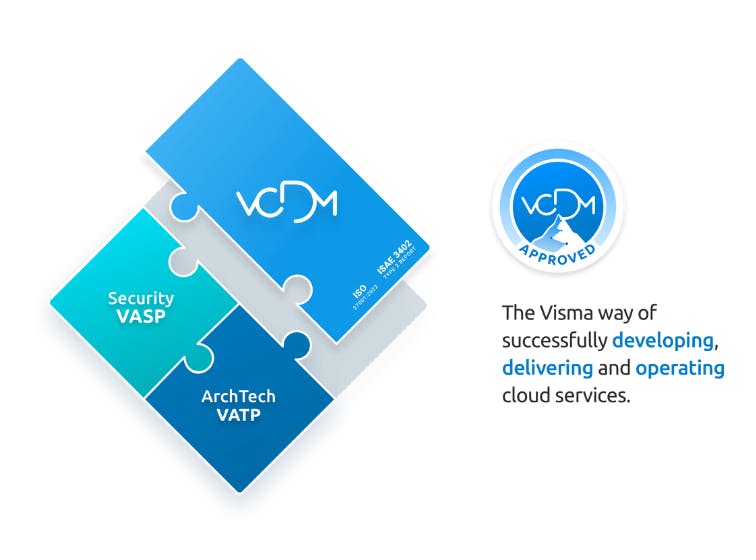Article
7 steps to building an ecosystem strategy
22/5/2024
min read
Innovation and development

An ecosystem strategy can be a powerful tool for your business to expand its reach, create value, and improve the customer experience. By connecting with partners, integrating technologies, and sharing data, your company can reap a range of benefits – from increased revenue to enhanced security.
What is an ecosystem?
An ecosystem is a group of software applications, tools, and platforms that work together to address specific business needs. An ecosystem with the Enterprise Resource Planning (ERP) system at its core is particularly beneficial for organisations that require a centralised method for managing operations across multiple departments and locations. Integrations outside the core can be added to fit your company’s unique business processes, which allows you to do more in one platform.
The ERP ecosystem
An ERP ecosystem typically consists of several components that work together to support business processes and functions. These components include accounting and financial management, supply chain management, human resources management (HRM), customer relationship management (CRM), project management, manufacturing, and reporting and analytics. By integrating these components to fit your specific business needs, you can streamline operations so they are more efficient and highly scalable.
APIs and ecosystems
APIs are a set of protocols, routines, and tools that applications use to communicate with each other. By leveraging the power of APIs, your business can integrate various software solutions to create an ecosystem that addresses specific needs. APIs can be used to integrate different components of the ERP ecosystem, as well as to connect with third-party applications and platforms. For example, you could use APIs to connect your ERP system with a CRM platform, allowing customer data to be easily shared between the two systems. APIs can also be used to connect with suppliers and partners, allowing for more efficient collaboration and communication. In today’s cloud-based software, applications come with a built-in Open API that allows other software to easily connect and interact with it. This is beneficial for creating a more interconnected and customisable software ecosystem.

How to build an ecosystem strategy
Here’s what your business can do today to start building a successful software ecosystem strategy.
1. Identify your business needs and goals
What are the specific pain points and challenges that your company is facing? What are your business objectives and goals for the future? Once you have a clear understanding of your business needs and goals, you can begin to explore how an ecosystem strategy can help you achieve them.
2. Evaluate your existing systems and technologies
The next step is to evaluate your existing systems and technologies to determine their compatibility with an ecosystem strategy. This requires a centralised system for managing operations across multiple departments and locations. If your current systems are not compatible, you may need to consider upgrading or replacing them to enable integration and communication with other systems.
3. Determine the components of your ecosystem
The components of your ecosystem will depend on your business needs and goals. At its core, an ecosystem typically consists of an ERP, which serves as the centralised system for managing operations across multiple departments and locations. Other components may include supply chain management, HRM, CRM, project management, manufacturing, and reporting and analytics.
4. Choose the right core solution
APIs allow different software applications, tools, and platforms to communicate and exchange data, enabling a seamless flow of information. So, you should choose an ERP solution that enables integrations with APIs. Your core product will set the tone for your entire ecosystem, so make sure to choose the one that enables scalability and growth.
Read more: 5 API trends we’re seeing in 2024
5. Develop customisations to fit unique business processes
One of the benefits of building an ecosystem strategy with APIs is the ability to customise system support to fit your unique business processes. APIs provide a flexible framework for integrating new software tools and platforms and adapting existing ones to meet the specific needs of your business. This can help streamline operations and improve efficiency.
6. Involve your business partners
An effective ecosystem strategy is also about involving your partner, reseller, or software provider. By leveraging their experience, your business can more quickly improve the customer experience and increase revenue.
7. Monitor and optimise performance
Building an ecosystem strategy is not a one-time event; it’s an ongoing process. It’s important to monitor and optimise performance to ensure that the ecosystem is delivering the expected benefits. This includes tracking key performance indicators (KPIs), such as efficiency, revenue, customer experience, and collaboration.

Want to learn how to transform your business with APIs?
Voice of Visma
Welcome to the Voice of Visma podcast, where we sit down with the business builders, entrepreneurs, and innovators across Visma, sharing their perspectives on how they scale companies, reshape industries, and create real customer value across markets.
















































































































































































































































